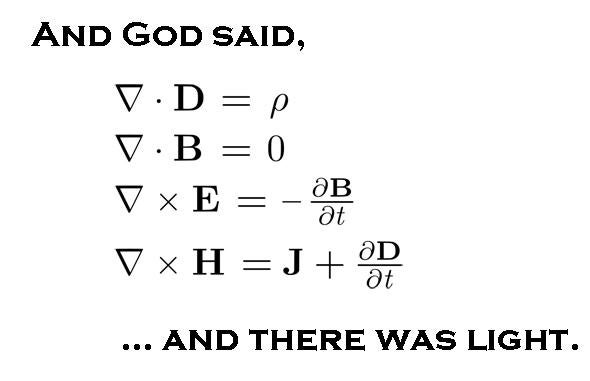This week marks the (very round number) anniversaries of two of the most important scientific papers ever published.
One you’ve heard of—or at least, you’ve heard of the author and its concepts. The other you probably haven’t. Yet it is equally as important, and tells as great a tale.
First things first: On Nov. 25, 1915—100 years ago Wednesday—Albert Einstein submitted a paper to the Proceedings of the Prussian Academy of Sciences in Berlin titled, “Die Feldgleichungen der Gravitation,” or “The Field Equations of Gravitation.”
If that doesn’t sound familiar, maybe it would help if I said that this paper laid the groundwork for Einstein’s General Theory of Relativity.
Oh, right. That paper.
Einstein published his Special Theory of Relativity in 1905. That groundbreaking work showed that space and time were relative, and that if you moved near the speed of light relative to another observer you’d see these two properties very differently. Since then, the Special Theory has since been experimentally verified countless times.
After publishing it, Einstein started working out how to add gravity to this mix. That’s extraordinarily difficult, and the math fiercely complicated. It took him many years, but he submitted the paper in November 1915, and it was published in the next month. In it, he made a startling and fundamental claim: Gravity is not really a force as had been thought, but instead is a warping of space caused by matter.
Sound esoteric? Well, that’s because it is, a bit. Centuries earlier, Isaac Newton had proposed his theory of universal gravitation, describing gravity as a force, attracting one object to another. It depended on their mutual masses and distance from each other. Newton’s idea works pretty well, and in fact we still use it today to plot courses for spaceships!
The term “force” is difficult to accurately define in layman’s terms,* but you can think of it as some sort of connection between objects, attracting them or repelling them. That’s how Newtonian mechanics works out.
But Einstein’s General Theory changed all that. He found that gravity is not a force between two objects, but a property of space itself, a geometric bending or warping of it. It’s usually described this way: Matter tells space how to bend, and space tells matter how to move.

Photo by NASA and ESA
It was a fundamental shift in how we thought of space and matter, and fit right in with Einstein’s previous Special Theory work in showing that space and time were connected. Their implications are wide-ranging as well; for example, the solutions to these General Theory field equations describe the structure of space, and naturally predict the existence of black holes. They also predict the existence of gravitational lensing (which we’ve seen, and which led to a confirmation of the existence of dark matter), gravitational radiation (which we’ve detected indirectly), and gravitational time dilation (which we’ve also seen).
An even more profound impact of these equations is that they lead the way to understanding how the Universe itself formed and evolves, and even of its ultimate fate.
Heck, without the General Theory your map app wouldn’t work!
So, yeah. It’s kind of a big deal.
The second anniversary we’re celebrating now is no less in stature, and has an equally deep practical impact on the world.
One hundred fifty years ago, in late November 1865, James Clerk Maxwell published his paper called “A Dynamical Theory of the Electromagnetic Field,” and in it he wrote down a set of equations we now call Maxwell’s equations, which should hint at their importance. Why? They describe how electricity and magnetism are two sides of the same coin, actually the effects of a single force called electromagnetism. Up to that point they were treated separately. Maxwell united them.
The importance of this can’t be overstated! His equations show that electricity can be used to induce magnetism, and vice-versa. We generate electrical power based on this.† He showed that light is itself a wave, traveling through space as an oscillating electromagnetic field. Ever heard of the electromagnetic spectrum? Yeah. That’s from Maxwell. His equations show how light behaves, and in fact you can derive the speed of light from these equations if you can measure some other fundamental properties of space.

Photo by N.A.Sharp, NOAO/NSO/Kitt Peak FTS/AURA/NSF
It is no exaggeration to say that Maxwell’s equations are at the very foundation of our modern civilization: computers, electrical systems, global communication—all of this comes straight out of these equations. Einstein’s ideas about relativity derive from them as well.
But there’s more to this story. Maxwell wasn’t a university scientist, working under a research grant to investigate the disparate fields of electricity and magnetism. Nor did he set out to revolutionize the entire planet’s civilization. He was just a curious person, someone who delighted in nature, who was puzzled by how it works, and who wanted to understand it.
And this led to the economic basis of a world.
This story is lovely and wonderful, and was best told by Carl Sagan in his opus, The Demon Haunted World: Science as a Candle in the Dark. I strongly urge you to buy and read that book; it’s magnificent, and many (including me) consider it Sagan’s best work. In one chapter, he talks about Maxwell and his equations, and it’s a paean to allowing scientists to study the Universe unfettered by politics (academic or governmental), allowing their imaginations to guide them.
In many fields of science there must be moral and ethical guidance, of course, but in theoretical physics it is the math and physics themselves that are the guide. Maxwell followed them and revolutionized a world. Einstein followed them and revolutionized our thinking about the Universe.
And today we celebrate the anniversary of both.
For science!
* Although, in this case, one could quote Kenobi et al., 1977: “[A force] surrounds us and penetrates us; it binds the galaxy together.” While widely admired and quoted, many find Kenobi’s dabbling in mysticism a bit off-putting.
† To be fair, scientists before Maxwell knew that electricity and magnetism influenced each other, but Maxwell quantified it, defined it, and it’s from there that our modern power systems are derived.
